Question of the Week: March 5, 2020
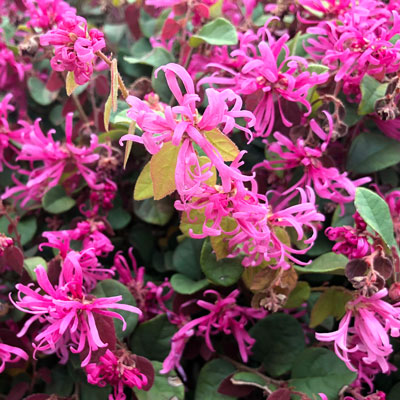
“Why does my fringeflower not look as good as others in my town?”
Botanically these are known as Loropetalums. When they were introduced into the nursery trade 25 or 30 years ago, they were really hot items. Many of us planted them with great anticipation.
However, within a few years we were being warned that they needed acidic soils – the same bed preparation that we would give azaleas.
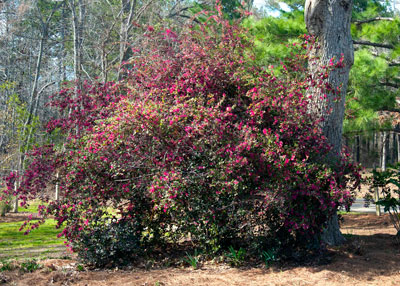
In East Texas, where soils are already acidic, they can be planted directly into the ground. However, by the time you get west to I-45 and beyond, fringeflowers must be planted into beds filled with pure organic matter.
That means along the I-35 corridor, including DFW, Austin and San Antonio they must be planted into a blend of equal amounts of sphagnum peat moss and finely ground pine bark mulch.
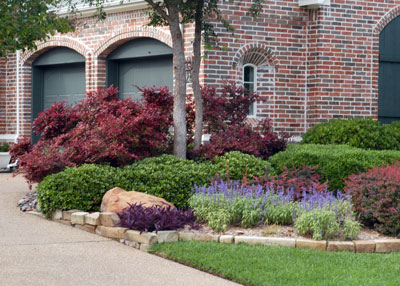
Ideally the bed would be 12 to 15 inches deep, half of it below grade and half above grade – that’s if you can do so without covering weep holes in the side walls of your house.
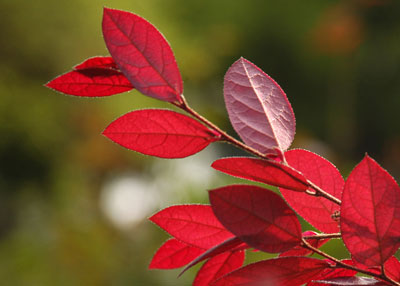
The short explanation of why you need to do that is to keep iron soluble. Iron is important in the chlorophyll molecule. However, iron is insoluble in alkaline soil conditions and plants can’t take it into their roots. That’s why we must use that same heroic soil preparation if we expect to succeed with loropetalums, azaleas, camellias, hydrangeas and other acid-loving plants that have high-iron needs.
If you’re willing to do that, and if you have a good spot for a fringeflower in your landscape, it could be a handsome addition to a shade or part-shade garden. You’ll find many varieties in the marketplace. Heights range from 18 inches to 10 feet and taller. Try a few to see how they do for you.
Symptoms of troubles…
• Iron deficiency: Yellowed leaves with veins that retain their darker color longest. Eventually leaves will turn entirely cream-colored and plants will weaken. You can try adding iron and sulfur soil-acidifier, but you’ll have to do so several times each growing season. (Keep iron products off masonry surfaces that could be stained.)
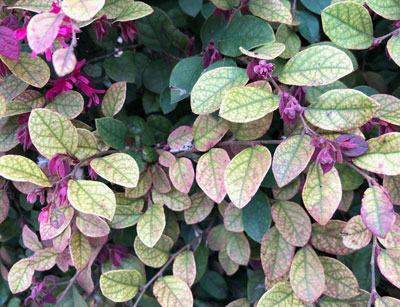
• Lace bugs: Leaves develop tan mottling during the summer and may become glossy and sticky. The actual insects have clear wings and are pinhead-sized, but you may not see them. You will see beads of black excrement on the backs of the leaves. They suck the color out of the leaves. Most general-purpose insecticides are quite efficient at eliminating them, but don’t let them get out of hand. Treat at first signs.
